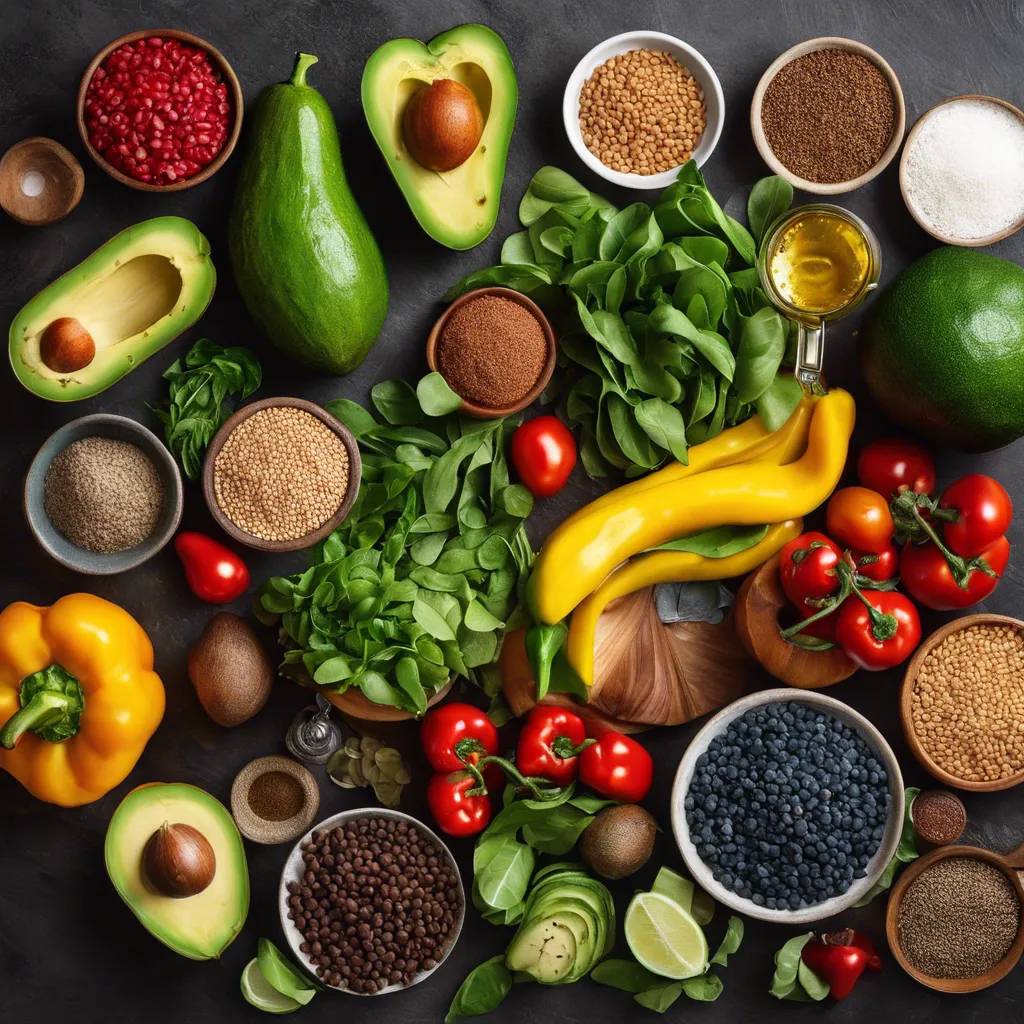Table of contents
- Exploring Mindful Cooking Techniques
- Optimizing Your Diet with Blood Sugar-Friendly Ingredients
- Creating Nutritious and Delicious Recipes
- Unlock the Secrets of Meal Planning and Portion Control
- How to Make Mealtime a Fun and Active Event
In the pursuit of healthy eating, it's crucial to consider how our food choices impact our blood sugar levels. With mindful cooking techniques and delicious recipes, this article delves into creating meals that are not only nutritious but also blood sugar-friendly. Whether you have diabetes or simply want to maintain stable glucose levels, discover a new way of preparing dishes that nourish both body and mind.
Exploring Mindful Cooking Techniques
Mindful cooking is a concept that emphasizes being fully present in the kitchen and paying careful attention to the process of preparing and enjoying food. By combining mindfulness techniques with cooking, it can promote healthy blood sugar levels.
- Mindful cooking starts with becoming aware of the ingredients you use. By choosing fresh, whole foods and avoiding processed ingredients high in sugars and unhealthy fats, you can create balanced meals that support stable blood sugar levels.
- Taking the time to prepare food mindfully also encourages portion control. Mindful cooks focus on the quality and taste of the food rather than mindlessly eating large quantities. This can help prevent overeating, which can lead to blood sugar spikes.
- During the cooking process, practicing mindfulness involves paying attention to the smells, textures, and flavors of the ingredients. This can enhance the overall dining experience and allow you to better recognize your body's hunger and fullness cues.
- Incorporating mindful eating practices into mealtime can also support healthy blood sugar levels. This means eating slowly, savoring each bite, and being aware of the body's signals of satisfaction. By eating mindfully, you can also better notice the effects of different foods on your blood sugar levels and make informed choices in the future.
- Overall, mindful cooking can promote healthy blood sugar levels by encouraging the selection of nutrient-dense ingredients, practicing portion control, and bringing awareness to the cooking and eating process.
Optimizing Your Diet with Blood Sugar-Friendly Ingredients
Selecting ingredients that help stabilize blood sugar levels is crucial for optimizing your diet. These ingredients play a key role in managing energy levels, preventing blood sugar spikes, and reducing the risk of developing chronic diseases like diabetes. Including foods rich in fiber such as whole grains, legumes, and vegetables can slow down the absorption of glucose, keeping blood sugar levels steady. Additionally, incorporating lean proteins and healthy fats can further enhance blood sugar control. By choosing blood sugar-friendly ingredients, you can maintain stable energy levels, promote overall health, and prevent long-term health complications.
Creating Nutritious and Delicious Recipes
Eating nutritious and blood sugar-friendly meals doesn't have to be complicated. Here are some easy-to-prepare recipes that will help you create delicious and healthy meals:
- Quinoa Salad with Roasted Vegetables: This recipe combines protein-packed quinoa with a variety of roasted vegetables like carrots, bell peppers, and zucchini. It is a nutrient-dense and fiber-rich dish that will keep your blood sugar levels stable.
- Baked Salmon with Lemon and Herbs: Salmon is a great source of omega-3 fatty acids, which are beneficial for heart health. This recipe involves marinating salmon fillets with lemon juice, herbs, and a touch of honey before baking them in the oven. It is a flavorful and nutritious dish.
- Turkey and Vegetable Stir-Fry: A stir-fry made with lean turkey breast, colorful vegetables like broccoli, bell peppers, and mushrooms, and a savory sauce is not only quick to prepare but also low in carbohydrates. It provides a good balance of protein, fiber, and essential nutrients.
- Spinach and Feta Stuffed Chicken Breast: This recipe features chicken breasts stuffed with a mixture of spinach, feta cheese, and herbs. It is a satisfying and protein-rich dish that is low in carbohydrates and suitable for those watching their blood sugar levels.
- Veggie-packed Omelette: Omelettes are versatile and customizable, making them a great option for a blood sugar-friendly meal. Use egg whites or a combination of whole eggs and egg whites and fill them with an array of colorful vegetables like spinach, tomatoes, mushrooms, and onions. Serve with a side of whole grain toast for added fiber.
- Greek Yogurt Parfait: This simple and delicious dessert or snack idea is made with Greek yogurt, fresh berries, and a sprinkle of nuts. Greek yogurt is high in protein and lower in carbohydrates compared to regular yogurt, making it an excellent choice for managing blood sugar levels.
- Chickpea and Vegetable Curry: Beans and legumes are rich in fiber and protein, which helps stabilize blood sugar levels. This curry recipe includes chickpeas, a variety of vegetables, and aromatic spices like turmeric, cumin, and coriander. Serve it with brown rice or quinoa for a complete meal.
- Lentil Soup with Vegetables: Lentils are a good source of fiber, protein, and complex carbohydrates. This comforting and hearty soup combines lentils with a medley of vegetables like carrots, celery, and onions. It is packed with nutrients and also provides a slow-release of energy.
Unlock the Secrets of Meal Planning and Portion Control
Meal planning and portion control are essential for blood sugar management. It helps maintain stable blood sugar levels, prevents spikes and crashes, and promotes overall health. By carefully planning meals and controlling portion sizes, individuals can better manage their blood sugar and maintain a balanced diet.
How to Make Mealtime a Fun and Active Event
In today's fast-paced world, finding time to prioritize our health and well-being can be a challenge. However, by combining regular physical activity with mindful cooking and eating, we can transform mealtime into a fun and active event that contributes to our overall wellness.
-
Improved Physical Fitness
Engaging in regular physical activity increases strength, endurance, and flexibility. By incorporating exercise into our daily routine, we enhance our overall physical fitness levels, leading to improved health and vitality.
-
Enhanced Focus and Mindfulness
Mindful cooking and eating involve being fully present and aware of our actions and the sensations we experience while preparing and consuming food. This practice enhances our focus, reduces stress, and promotes a greater appreciation for the nourishment our meals provide us.
-
Weight Management
Combining physical activity with mindful eating contributes to better weight management. Regular exercise burns calories, while mindful eating encourages us to pay attention to our body's hunger and fullness cues, preventing overeating and fostering a healthier relationship with food.
-
Stress Reduction
Both physical activity and mindful cooking and eating have been shown to reduce stress levels. Exercise releases endorphins, which are natural mood boosters, while the process of cooking and savoring a meal can be therapeutic and calming, helping to alleviate stress and promote a sense of well-being.
-
Improved Family Dynamics
Making mealtime a fun and active event can strengthen family bonds. Engaging in physical activities together, such as cooking or going for a post-meal walk, creates opportunities for quality time, communication, and shared experiences, ultimately fostering a sense of connection and unity within the family.
In conclusion, practicing mindful cooking can be a beneficial approach for those looking to maintain stable blood sugar levels. By being present and aware during meal preparation, individuals can make healthier choices and optimize their nutrition intake. Incorporating whole, unprocessed ingredients, balancing macronutrients, and choosing low glycemic index foods are all essential strategies to create blood sugar-friendly recipes. Additionally, paying attention to portion sizes and enjoying meals without distractions can further contribute to overall blood sugar control. Mindful cooking not only supports healthy eating habits but also promotes mindfulness in other aspects of life, leading to improved overall well-being.
Frequently asked questions related to blood sugar friendly recipes
What is mindful cooking?
Mindful cooking is the practice of being fully present and aware while preparing and cooking food. It involves paying attention to each step of the cooking process, including the ingredients, measurements, and cooking techniques.
What are some blood sugar-friendly ingredients to use in mindful cooking?
Some blood sugar-friendly ingredients to use in mindful cooking include whole grains, lean proteins, non-starchy vegetables, and healthy fats. These ingredients have a lower glycemic index, which means they have less impact on blood sugar levels.
How can mindful cooking help manage blood sugar levels?
Mindful cooking can help manage blood sugar levels by promoting healthier eating habits. By focusing on whole, nutrient-dense foods and controlling portion sizes, mindful cooking can prevent spikes in blood sugar levels and maintain stable glucose levels.
Can mindful cooking help with weight management?
Yes, mindful cooking can help with weight management. By being aware of portion sizes and using healthier cooking methods, mindful cooking promotes balanced meals and prevents overeating. This can lead to maintaining a healthy weight or even losing weight if necessary.
What are some tips for practicing mindful cooking?
Some tips for practicing mindful cooking include: 1. Planning meals in advance to ensure balanced nutrition and portion control. 2. Taking time to fully engage with the cooking process, focusing on each ingredient and step. 3. Minimizing distractions in the kitchen to stay present and focused. 4. Experimenting with different flavors and cooking techniques to keep meals interesting and enjoyable.
Are there any specific cooking techniques that are beneficial for blood sugar management?
Yes, there are specific cooking techniques that can be beneficial for blood sugar management. For example, steaming, grilling, and roasting are healthier alternatives to frying or sautéing as they require less added fats. Additionally, using herbs, spices, and vinegar instead of sugary sauces or dressings can enhance flavor without adding extra calories or carbohydrates.







